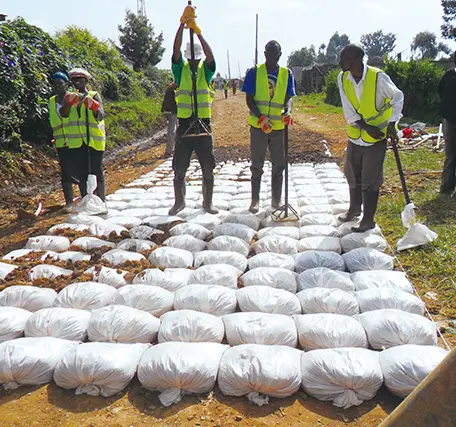The Government of the Republic of Uganda has received a grant worth US $326,478 from its Japanese counterpart to implement the second phase of the Do-nou project. The first phase of the project was implemented last year in areas of Kamwokya, Kyebando, and Kaliba in Kampala, and in Nakkedde, Tumbali, Luguzi and Kabumba in Wakiso districts.
The 2nd phase of the project shall be implemented in Kasese, Bunyangabu, Kabarole and Kyenjojo districts as of February this year to January next year. The project is meant to empower communities to actively participate in self-sustaining developmental projects to maintain their roads using local materials and technology.
Also Read: Uganda kicks-off US $5.5m Arua road project
Do-nou Technology.
Do-nou” is a Japanese word that means wrapping soil in a gunny bag. The “Do-nou” Technology which is used in the above-mentioned project involves the use of gunny bags filled appropriately with either sand, farm soil, gravel or murram, the opening properly tied and then compacted manually or using a pedestrian roller.
Lawrence Luta one of the engineers in the project said that they dig into the ground and create a wide ditch, pack marram or sand in organic bags which they then compact in the already dug area and finally cover the bags with marram to create a fine touch for easy movement.
“This method works best in swampy and sloppy areas and the best part of the technology, the road can take three years without repair regardless of the weather condition,” he affirmed.
Adaptation of the Do-nou technology in Africa
Uganda is not the first country in the African continent to apply this technology. So far the method has been used to construct roads in 24 other countries across Africa including Kenya, Rwanda, Gambia, and Myanmar.
The Do-nou technology can also be applied in the construction of dam embankments, road maintenance, culvert and bridge construction, flood routing dykes, footpaths in flooded areas, building foundations and retaining walls.
